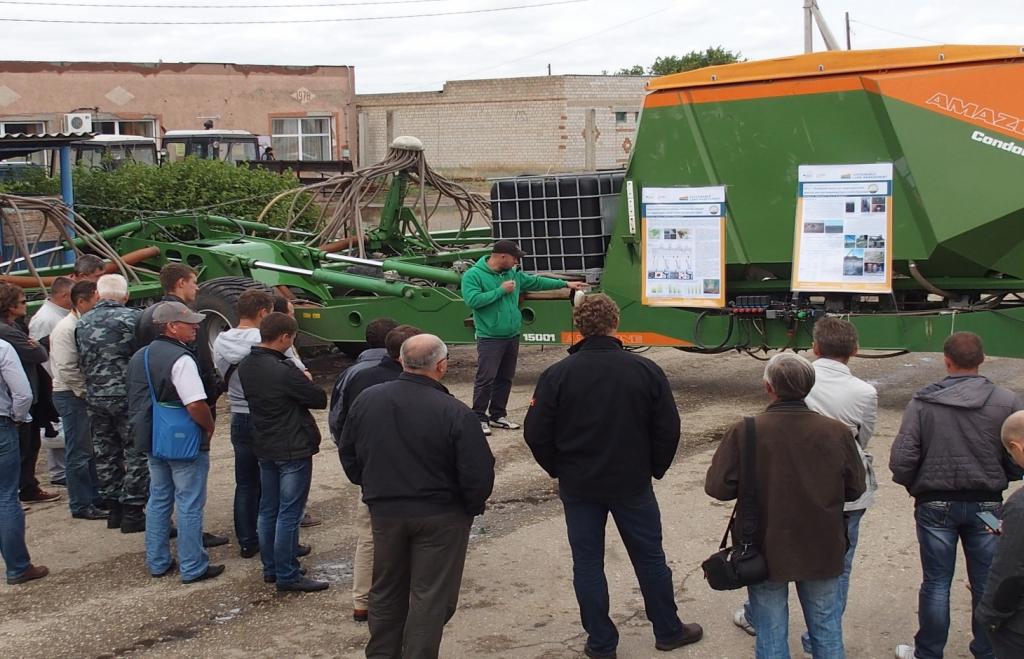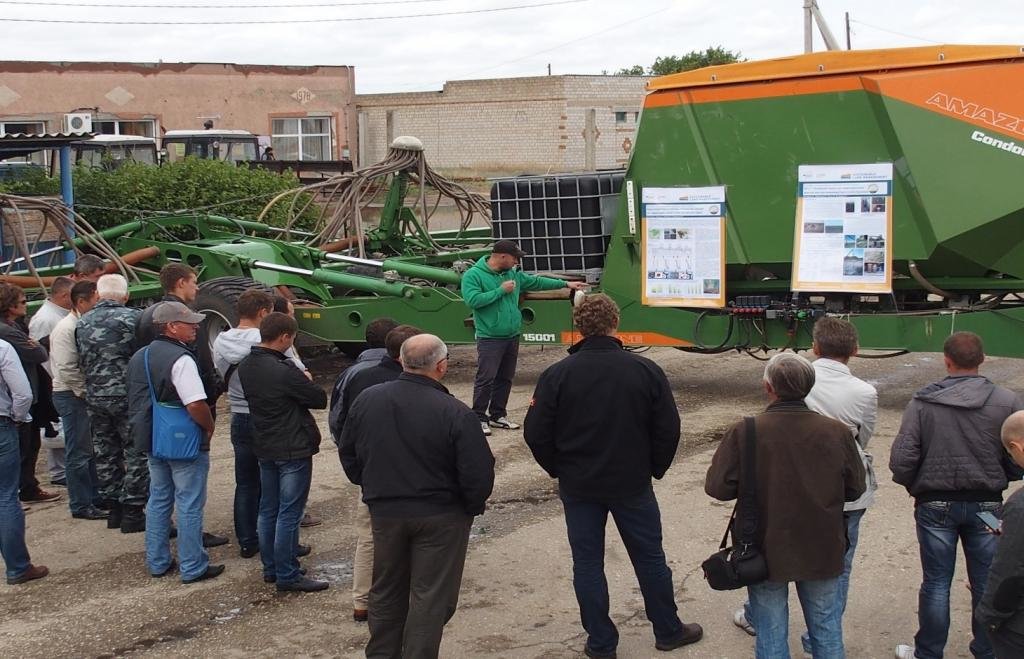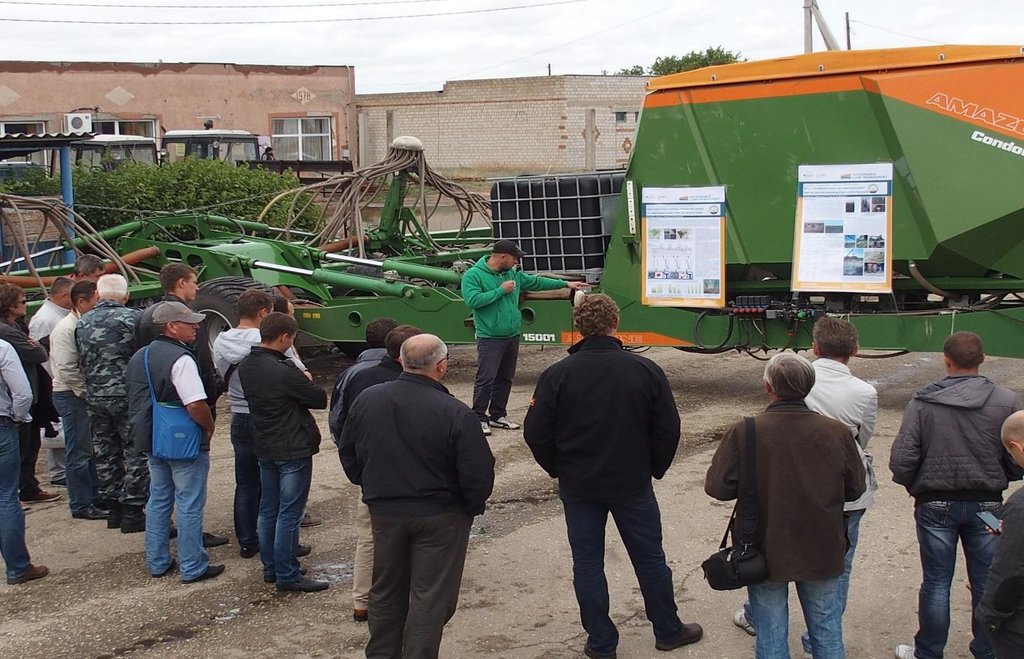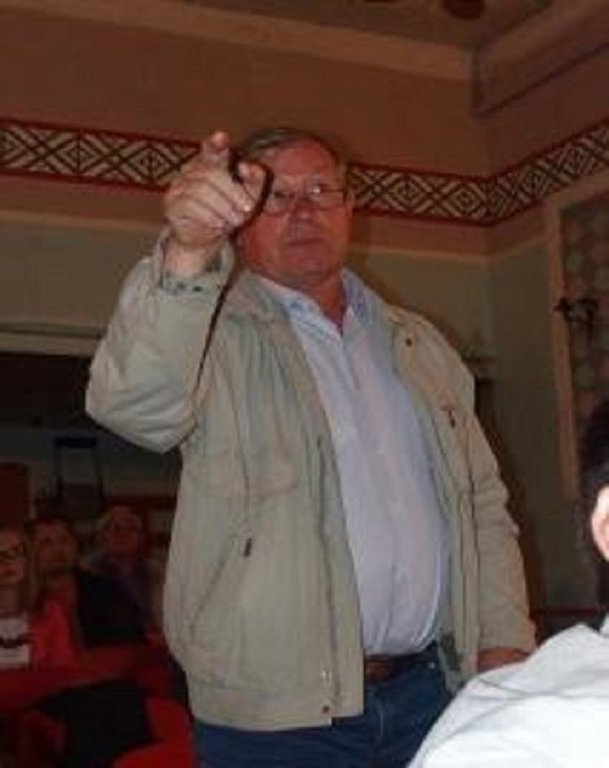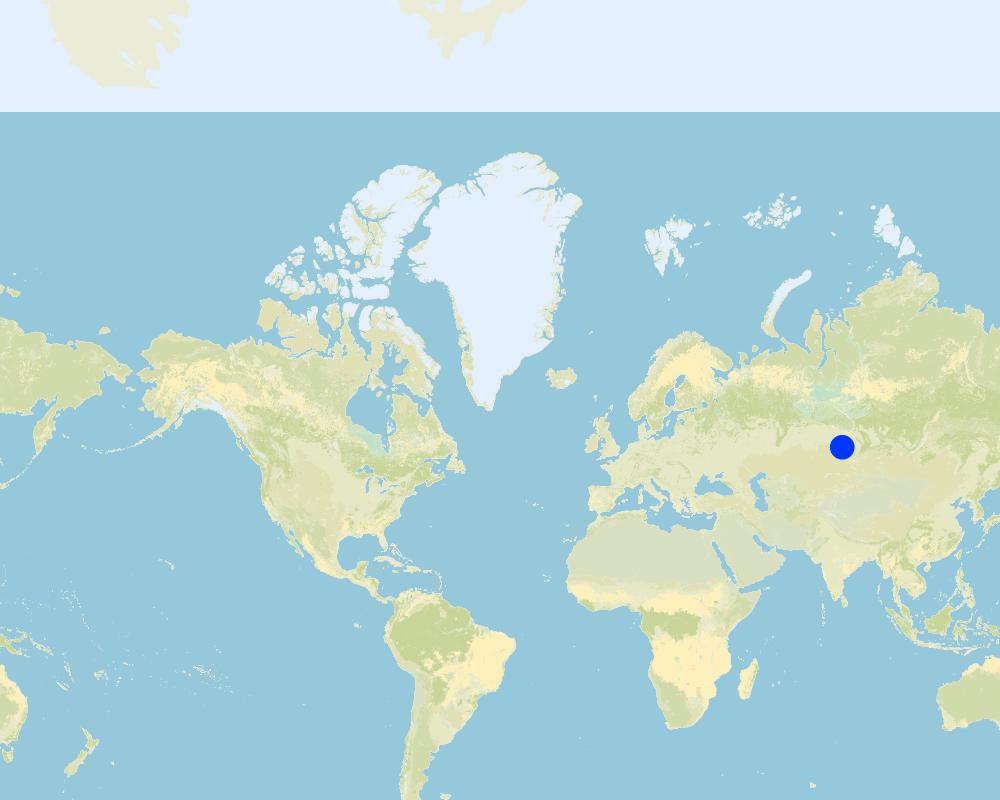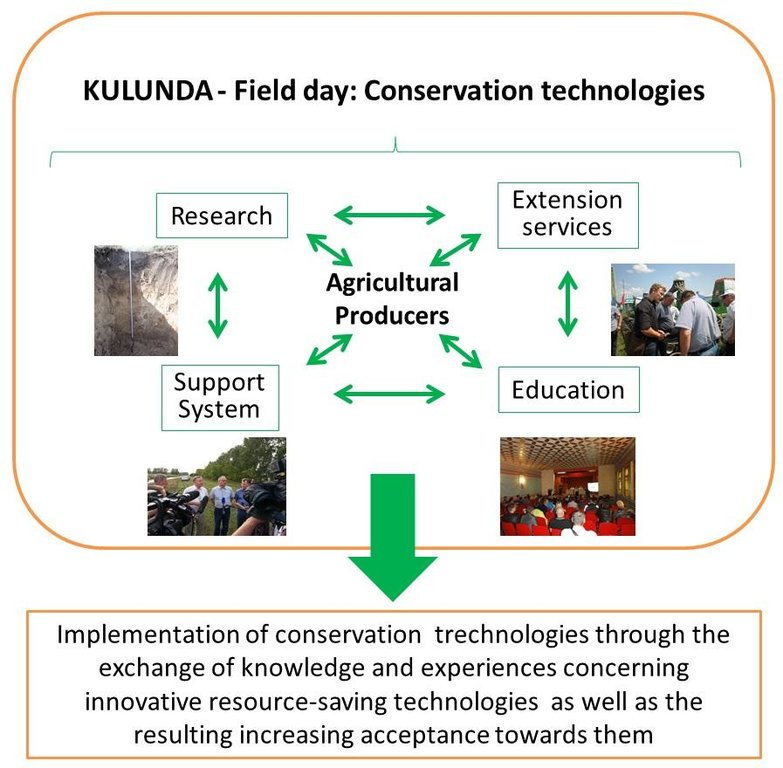Field days [Federação Russa]
- Criação:
- Atualização:
- Compilador/a: Peter Liebelt
- Editor: –
- Revisor: David Streiff
Полевой семинар
approaches_2617 - Federação Russa
Veja as seções
Expandir tudo Recolher tudo1. Informação geral
1.2 Detalhes do contato das pessoas capacitadas e instituições envolvidas na avaliação e documentação da abordagem
Especialista em GST:
Jelinek Ladislav
Martin Luther University Halle-Wittenberg
Especialista em GST:
Kasarjyan Milada
Martin Luther University Halle-Wittenberg
Especialista em GST:
Wust Andreas
Martin Luther University Halle-Wittenberg
Especialista em GST:
Bavorova Miroslava
Martin Luther University Halle-Wittenberg
Especialista em GST:
Herzfeld Thomas
Martin Luther University Halle-Wittenberg
Especialista em GST:
Imamverdiyev Nizami
Martin Luther University Halle-Wittenberg
Especialista em GST:
Hiller Karsten
Martin Luther University Halle-Wittenberg
Especialista em GST:
Kley Dorothee
Martin Luther University Halle-Wittenberg
Especialista em GST:
Illiger Patrick
Martin Luther University Halle-Wittenberg
Especialista em GST:
Frühauf Manfred
Martin Luther University Halle-Wittenberg
Nome do projeto que facilitou a documentação/avaliação da Abordagem (se relevante)
Sustainable land management in the Russian steppes (KULUNDA / GLUES)Nome da(s) instituição(ões) que facilitou(ram) a documentação/avaliação da Abordagem (se relevante)
Martin-Luther-University Halle-Wittenberg (Martin-Luther-University Halle-Wittenberg) - Alemanha1.3 Condições em relação ao uso da informação documentada através de WOCAT
Quando os dados foram compilados (no campo)?
19/07/2016
O/a compilador/a e a(s) pessoa(s) capacitada(s) aceitam as condições relativas ao uso de dados documentados através da WOCAT:
Sim
1.4 Referência ao(s) questionário(s) sobre tecnologias da GST
2. Descrição da abordagem de GST
2.1 Descrição curta da abordagem
Field days are events for regional stakeholders, mainly farmers in the study area, to discuss their demands regarding scientific help, and to be informed about the activities and results of new methods and technologies for conservation agriculture.
2.2 Descrição detalhada da abordagem
Descrição detalhada da abordagem:
Aims / objectives: The approach aimed at raising awareness, encouraging exchange and communication for new sustainable land management (SLM) technologies including no-till and minimum till. The main goal - implementation of improved SLM technologies – was intended to be achieved through capacity building and strengthening of the acceptance of new technologies Field days, organized at a partner farm/ study site in Poluyamki (Mikhailovski Rayon), were a suitable framework for the achievement of this goal. Another objective of the field day is cooperation and networking between farmers, scientists, representatives of the regional politics and administration, and commercial companies. This stimulates the exchange of knowledge and the dissemination of new information about SLM - which is very important for the successful implementation and evolution of the technology.
Methods: For effective presentation of the minimum and no-till cropping systems to the public, and to give everyone present at the field day the opportunity to inform themselves about conservation measures, an information point was set up by the project. For spread of information about research activities, results and recommendations, posters were presented - and leaflets and brochures were handed out. In this way it was possible to promote knowledge transfer from the scientists to the farmers, and to receive feedback.
Stages of implementation: Furthermore, interdisciplinary and transdisciplinary knowledge exchange and discussion was initiated about the results and recommendations, which were based on the presentations given in the community centre. Due to the participation of many important local stakeholder groups, the field day was a suitable platform to contribute to network-building. Also, among the participants were private companies working in the agrarian sector. The cooperation partner of the research project, the Amazone company, also made presentations. In the study site the new tillage systems are already working. Furthermore the test farm unit in Poluyamki has also started to implement no-till and minimum tillage systems on fields outside the test farm, on farmer’s fields that do not belong to the project’s research sites and are not under the control of the project staff.
Role of stakeholders: Farmers are the stakeholders of primary importance, since it is hoped they will take up and implement the conservation technologies. Therefore most participants during the field day were farmers. Those invited are interested in new technologies and have the necessary financial power to invest in new technologies. The chances of successful implementation in their farms are very good. Most of these farms already have experience in conservation technologies. In the investigation area, about 20-30% of land is already cropped/ cultivated under some form of conservation soil tillage.
2.3 Fotos da abordagem
2.5 País/região/locais onde a abordagem foi aplicada
País:
Federação Russa
Região/Estado/Província:
Altai Krai
Especificação adicional de localização:
Mikhaylovski district / rayon
Comentários:
Area of the test field: 0.13 km2
Total farmland, where the field day was organized: 250 km2
Whole investigation area, where the participants of the field day came from 80 000 km2
Map
×2.6 Datas de início e término da abordagem
Indique o ano de início:
2013
Ano de término (caso a abordagem não seja mais aplicada):
2016
2.7 Tipo de abordagem
- Baseado em projeto/programa
2.8 Principais metas/objetivos da abordagem
The Approach focused mainly on SLM with other activities (Awareness raising for the importance of environmental as well as economic sustainability)
Improvement of technology adoption through: Awareness raising, knowledge exchange and transfer, capacity building
The SLM Approach addressed the following problems: - Low agricultural production of conventional/ traditional farming systems
- Limited economic efficiency of conventional/ traditional cropping systems
- Lack of soil water and decrease of soil fertility under conventional/ traditional farming systems
- lack of technical knowledge to implement modern adapted technologies for cropping and cope with more extreme events such as drought
2.9 Condição que propiciam ou inibem a implementação de tecnologia/tecnologias aplicada(s) segundo a abordagem
Normas e valores sociais/culturais/religiosos
- Inibitivo
Historically-caused low levels of trust among land users and other local stakeholder groups like education institutions or consulting services, among others, limits the adoption of “good farming practices”.
Treatment through the SLM Approach: The field days and exchange of practice – oriented knowledge increased the confidence of farmers. This constraint can be addressed by specifically targeted policies, e.g. provision of grants or credit for the establishment of producer groups.
Disponibilidade/acesso a recursos e serviços financeiros
- Inibitivo
High cost of new minimum and no-till machinery and difficult access to credits. Budget limitations are proportionately greater with smaller farms (highly variable yields reduce farm profitability, limited access to external funds)
Treatment through the SLM Approach: Subsidised interest rates for machinery. In 2015 machinery for no-till tillage was not susidized.
Demonstrate that environmentally friendly innovative farming technologies are profitable and worthwhile to invest in.
Quadro institucional
- Inibitivo
Unfavourable framework conditions and low capacity of the administration to monitor the state of land and to enforce the soil protection law which would oblige land users to adopt conservation measures.
Treatment through the SLM Approach: The approach did not address this factor.
Quadro jurídico (posse de terra, direitos de uso da terra e da água)
- Inibitivo
Unclear land use rights. High share of rented land. Missing incentives to stimulate land users to adopt conservation practices. Secure land use rights motivates to more conscious care for the land and stimulates farmers to adopt better practices.
Treatment through the SLM Approach: To make the best of private ownership, land users need to get a better concept of farming as a business. Strengthen the role of the ‘state redistribution of funding’ system (between different branches of the economy).
The existing land ownership, land use rights / water rights moderately hindered the approach implementation There are still some legislative and administrative weaknesses that limit the full execution of the ownership rights (non-defined borders, lacking cadastral registration of some plots, missing owners, etc.). Furthermore, around half of the land utilized in Altai Krai is owned by the state (of that around 2 milion hectares are administered by the Redistribution Fund). Another aspect is the capacity of the state monitoring agency (State Veterinary and Phytosanitary Controls) to control the compliance of the rules provided the land use conditions are stricter.
Conhecimento sobre GST, acesso a suporte técnico
- Inibitivo
In Russia conventional / traditional cultivation still prevails. although market for no-till technologies is fully developed and functional. Various machinery companies either have branches or production units in Russia.
Treatment through the SLM Approach: More events where experience and results of min- and no-till can be shared and discussed.
3. Participação e papel das partes interessadas envolvidas
3.1 Partes interessadas envolvidas na abordagem e seus papéis
- Usuários de terra/comunidades locais
Local farmers of the Altai Krai
- Organizações comunitárias
Local farm cooperatives of the Altai Krai
- Especialistas em GST/ consultor agrícola
Regional advisors and national SLM specialists and international specialist (KULUNDA scientists)
- Governo local
Politicians of the territory level (Altai Krai) and district level Mikhayloski rayon.
- Staff member of the project
German and Russian scientists of the project
3.2 Envolvimento do usuários de terra/comunidades locais nas diferentes fases da abordagem
| Envolvimento do usuários de terra/comunidades locais | Especifique quem estava envolvido e descreva as atividades | |
|---|---|---|
| Iniciação/motivação | Participativo | Experimental plots, demonstration plots and field days were held on land users farms |
| Planejamento | Participativo | |
| Implementação | Participativo | |
| Monitoramento/avaliação | Participativo | |
| Research | Passivo |
3.3 Fluxograma (se disponível)
Descrição:
The Field Day brings different stakeholder groups together and promotes new technologies and thus the implementation of conservation land use practices. This is through knowledge and exchange on resource-saving technologies.
Autor:
Peter Liebelt
3.4 Decisão sobre a seleção de tecnologia/tecnologias de GST
Especifique quem decidiu sobre a seleção de tecnologia/tecnologias a serem implementadas:
- Principalmente especialistas em GST, após consulta com usuários da terra
Explique:
The SLM specialists of the the KULUNDA project mainly make the decisions on the choice of the SLM technology in cooperation with the farmers.
Decisions on the method of implementing the SLM Technology were made by Project staff. At the beginning of the project a large interview campaign with relevant local stakeholders was conducted by the scientists of the KULUNDA-project. Based on the survey results, a decision on the implementation measures were made by the scientific staff on the German and Russian site with consultation with local stakeholder groups .
4. Suporte técnico, reforço das capacidades e gestão do conhecimento
4.1 Reforço das capacidades/ formação
Foi oferecida formação aos usuários da terra/outras partes interessadas?
Sim
Especifique quem foi capacitado:
- Usuários de terra
- Equipe de campo/consultores
Tipo de formação:
- Agricultor para agricultor
- Áreas de demonstração
- Reuniões públicas
Assuntos abordados:
Competitiveness of agricultural enterprises, ecologically and economically effective farm management through the use of resource-conserving crop production, costs for introducing modern tillage systems, personnel management, monitoring systems
4.2 Serviço de consultoria
Os usuários de terra têm acesso a um serviço de consultoria?
Sim
Especifique se foi oferecido serviço de consultoria:
- nas áreas dos usuários da terra
Descreva/comentários:
Name of method used for advisory service: Field days for demonstration and exchange; Key elements: The field seminar was a suitable platform for knowledge exchange on agricultural production in the Kulunda steppe, Capacity building: On-field demonstration as well as poster and presentations of project results and recommendations. Discussions in the field as well as in the lecture room allowed to address individual stakeholder questions and to suggest solutions. ; Training events in the vocational centre as a suitable way for knowledge transfer to farmers and specialists (training for trainers) in agricultural sector and capacity building.
Advisory service is quite adequate to ensure the continuation of land conservation activities; There is already mainly a governmental advisory structure. The consultants are able to make recommendations for soil conserving technologies. However, international expertise and the demand of consultation by the farmers is too low.
4.4 Monitoramento e avaliação
Monitoramento e avaliação são partes da abordagem?
Sim
Comentários:
Bio-physical aspects were regular monitored by project staff, land users through observations; indicators: crop and weed development, field emergence
Bio-physical aspects were regular monitored by project staff through measurements; indicators: physical and chemical soil parameters as well as soil water
Technical aspects were regular monitored by project staff, land users through observations; indicators: observation of the functionality of the soil conserving technologies, placement accuracy
Technical aspects were regular monitored by project staff through measurements; indicators: fuel consumption, yield,
Socio-cultural aspects were ad hoc monitored by project staff through observations; indicators: attitude
Economic / production aspects were regular monitored by project staff through measurements; indicators: input costs (labour seed, fertilizer, pesticide yield, profit margin
No. of land users involved aspects were ad hoc monitored by project staff through observations
Management of Approach aspects were ad hoc monitored by None through observations
There were no changes in the Approach as a result of monitoring and evaluation
4.5 Pesquisa
A pesquisa foi parte da abordagem?
Sim
Especifique os tópicos:
- Sociologia
- Economia/Marketing
- Ecologia
- Tecnologia
5. Financiamento e apoio material externo
5.1 Orçamento anual para o componente de GST da abordagem
Caso o orçamento exato seja desconhecido, indique a faixa:
- 2.000-10.000
Comentários (p. ex. principais fontes de recursos/principais doadores):
Approach costs were met by the following donors: international (German Ministry of Education and Research, BMBF): 50.0%; private sector (AMAZONE Company for land use technology): 50.0%
5.2 Apoio financeiro/material concedido aos usuários da terra
Os usuários da terra receberam apoio financeiro/material para a implementação de tecnologia/tecnologias?
Sim
Caso afirmativo, especifique tipo(s) de apoio, condições e fornecedor(es):
by the agricultural company 'AMAZONE'
5.3 Subsídios para entradas específicas (incluindo mão-de-obra)
- Equipamento
| Especifique quais entradas foram subsidiadas | Em que medida | Especifique os subsídios |
|---|---|---|
| Maquinário | Parcialmente financiado | |
| Ferramentas | Parcialmente financiado | |
- Agrícola
| Especifique quais entradas foram subsidiadas | Em que medida | Especifique os subsídios |
|---|---|---|
| Sementes | Parcialmente financiado | |
| Fertilizantes | Parcialmente financiado | |
Se a mão-de-obra pelos usuários da terra foi uma entrada substancial, isso foi:
- Voluntário
5.4 Crédito
Foi concedido crédito segundo a abordagem para atividades de GST?
Não
6. Análise de impactos e declarações finais
6.1 Impactos da abordagem
A abordagem auxiliou os usuários da terra a implementar e manter as tecnologias de GST?
- Não
- Sim, pouco
- Sim, moderadamente
- Sim, significativamente
The field day allowed the transfer of project-based results on the subject of conservation agriculture to the local farmers and other regional actors and promotes the implementation of new soil conserving methods and strategies in the research area by the farmers.
A abordagem concedeu autonomia aos grupos social e economicamente desfavorecidos?
- Não
- Sim, pouco
- Sim, moderadamente
- Sim, significativamente
The implementation of the technology is not primarily aimed at these issues.
A abordagem melhorou as questões de posse de terra/diretos do usuário que inibiam a implementação das tecnologias de GST?
- Não
- Sim, pouco
- Sim, moderadamente
- Sim, significativamente
The problem is unlikely to be overcome in the near future.
Did other land users / projects adopt the Approach?
- Não
- Sim, pouco
- Sim, moderadamente
- Sim, significativamente
The field days motivated the farmers and land use specialists to implement the conservation technologies. There is no information about the number of farmers who implement as a result of the field days.
Did the Approach lead to improved livelihoods / human well-being?
- Não
- Sim, pouco
- Sim, moderadamente
- Sim, significativamente
By implementing the new conservation technologies the sustainability of farming systems in both the ecological and the economic sense increases.
Did the Approach help to alleviate poverty?
- Não
- Sim, pouco
- Sim, moderadamente
- Sim, significativamente
The implementation of the minimum till and no till technologies protect the soil as an important living and economic basis.
6.2 Principal motivação dos usuários da terra para implementar a GST
- Produção aumentada
To minimize fluctuations in yield and to secure yield through a higher sustainability
- Lucro (lucrabilidade) aumentado, melhora da relação custo-benefício
Due to the higher profit margin
- Carga de trabalho reduzida
The reduction of workload is important especialy in terms of the large farm sizes.
- Pagamentos/subsídios
- Afiliação a movimento/projeto/grupo/rede
Affiliation with the KULUNDA project
6.3 Atividades de sustentabilidade de abordagem
Os usuários da terra podem manter o que foi implementado através da abordagem (sem apoio externo)?
- Sim
6.4 Pontos fortes/vantagens da abordagem
| Pontos fortes/vantagens/oportunidades na visão do usuário da terra |
|---|
| Opportunity for farmers to get information about new agricultural machinery and other products for implementing new conservation farming system (How to sustain/ enhance this strength: More intensive and profound consultation by agricultural companies regarding new conservation technologies.) |
| Exchange of experience in sustainable land use technologies between the farmers (How to sustain/ enhance this strength: More participating farmers and a constant exchange between not only on the field days) |
| Land user, specialists and advisers all get to know about new technical findings and basic research (How to sustain/ enhance this strength: Regular meetings between the stakeholders. Inclusion of knowledgeable and successful farmers will increase the acceptance of the results presented.) |
| Pontos fortes/vantagens/oportunidades na visão do/a compilador/a ou de outra pessoa capacitada |
|---|
| Network building - strengthening and extension of the stakeholder platform. This platform includes different stakeholder spheres: extension service, land users, those in education, scientists, other support systems (How to sustain/ enhance this strength: By inviting various stakeholder groups and by creating opportunities for communication between participants.) |
| Participation of land users allows farmer-to-farmer learning (How to sustain/ enhance this strength: Inclusion of different stakeholders for broad knowledge transfer. Large number of visitors helps to disseminate knowledge.) |
6.5 Pontos fracos, desvantagens da tecnologia e formas de superá-los
| Pontos fracos/desvantagens/riscos na visão do usuário da terra | Como eles podem ser superados? |
|---|---|
| Great organizational effort | More external support of field days for farmers. |
| Because of the high number of participants and the time limit field days are not well suited for coaching of individual farmers | Intensification of extension services. Initiation of additional events for advising. |
| Pontos fracos/vantagens/riscos na visão do/a compilador/a ou de outra pessoa capacitada | Como eles podem ser superados? |
|---|---|
| Reconciliation of basic research and applied research | Intensified cooperation between researchers and practitioners like farmers or agricultural companies |
| Limited duration of the project | By enhancing continuity of measures that are independent of the project. Strategy to initiate and promote the engagement of local partners such as the agricultural university or farmer associations / groups. |
7. Referências e links
7.1 Métodos/fontes de informação
- visitas de campo, pesquisas de campo
- entrevistas com usuários de terras
Links e módulos
Expandir tudo Recolher tudoLinks
Não há links
Módulos
Não há módulos


